Disclosure: This article contains affiliate links. We may earn a commission from purchases at no extra cost to you, which helps our travel content.
Standing at the edge of Vatnajökull, Europe's largest glacier, I felt that familiar tension between awe and insignificance that only nature's grandest spectacles can evoke. The crystalline blue ice stretched before me like a frozen ocean, sculpted over millennia into a landscape both alien and mesmerizing. After exploring hot springs across three continents, I found myself drawn to their polar opposite—Iceland's magnificent ice formations near the charming fishing town of Höfn. What followed was a week of exhilarating glacier adventures that balanced luxury accommodations with raw, untamed wilderness experiences that few travelers truly discover.
Höfn: Where Luxury Meets Wilderness
Nestled between the imposing Vatnajökull glacier and the dramatic Atlantic coastline, Höfn (pronounced like 'hup' with a slight n) offers a perfect base for glacier adventures without sacrificing comfort. After years of exploring luxury accommodations worldwide, I've developed a particular appreciation for properties that honor their surroundings, and Fosshotel Glacier Lagoon exemplifies this philosophy beautifully.
The hotel's minimalist Scandinavian design features floor-to-ceiling windows that frame the surrounding mountains like living artwork. After each day's adventure, I found myself unwinding in their geothermal hot tub, watching the Northern Lights dance across the sky while sipping hot chocolate spiked with Brennivín (Iceland's signature spirit).
For dining, Pakkhús Restaurant in town serves the freshest langoustine (Höfn's specialty) in a converted warehouse overlooking the harbor. The contrast between the rugged landscape outside and the refined dining experience within perfectly encapsulates Iceland's unique approach to luxury—one that celebrates rather than conquers its wild surroundings.
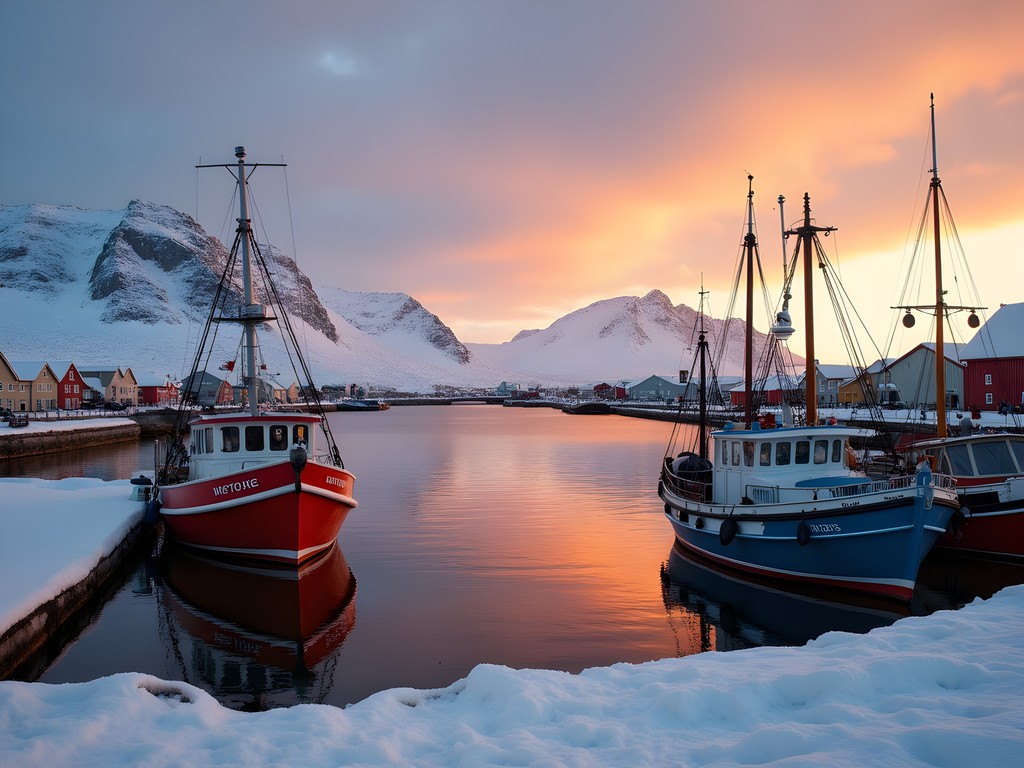
💡 Pro Tips
- Book Fosshotel Glacier Lagoon at least 3 months in advance for winter stays
- Request a north-facing room for potential Northern Lights viewing from your window
- Make dinner reservations at Pakkhús before arriving in Höfn—it fills quickly even in winter
Vatnajökull's Crystal Ice Caves: A Fleeting Winter Wonder
Of all my travels across 27 countries, few experiences have left me as speechless as entering Vatnajökull's natural ice caves. These ephemeral wonders—formed anew each winter as meltwater carves passages through the glacier—offer a glimpse into what feels like another planet.
I booked a private tour with local guides who have spent decades studying the glacier's movements. While group tours are available, the private experience allowed me to linger in the caves, capturing photographs of the surreal blue light filtering through centuries-old ice without other tourists in frame. My guide Gunnar explained how each bubble trapped in the ice was ancient air, preserved from a time before human industrialization.
The journey to the caves requires specialized transportation. Our super jeep navigated terrain I wouldn't have believed passable, equipped with glacier tires that seemed to grip the impossible. For the adventure, I wore my heated gloves which proved invaluable for maintaining dexterity for photography in the sub-zero temperatures of the caves.
Inside, the translucent blue walls seemed to pulse with an inner light—a phenomenon created by the compression of ice that eliminates air bubbles and absorbs all colors of the light spectrum except blue. The experience connects you to geological time in a way few other natural wonders can.

💡 Pro Tips
- Book ice cave tours at least 2 months in advance—they sell out quickly
- Bring a tripod for long-exposure photography inside the caves
- Wear waterproof everything—the caves can drip as temperatures fluctuate
Glacier Hiking on Skaftafellsjökull: Walking on Ancient Ice
Growing up in Kyoto, where history is measured in centuries, Iceland's glaciers offered a humbling perspective—here, time is measured in millennia. Skaftafellsjökull, an accessible outlet glacier of the massive Vatnajökull ice cap, provides one of the most rewarding hiking experiences in Iceland, particularly for those willing to venture beyond the typical tourist routes.
After being fitted with crampons and safety equipment at the Skaftafell Visitor Center, our small group began the ascent onto the glacier with our guide Ásta, a glaciologist who shared insights about the accelerating retreat of Iceland's ice caps. The specialized equipment transformed what would be impossible terrain into an accessible adventure—though one that still demanded respect and careful attention.
The glacier's surface resembles an alien landscape: deep crevasses of electric blue, volcanic ash layers that tell stories of eruptions centuries past, and meltwater streams carving ever-changing pathways through the ice. I was particularly fascinated by the glacier tables—large rocks that protect the ice beneath them, creating pedestals that rise higher as surrounding ice melts.
For this technical hike, my merino base layers proved essential, regulating body temperature despite the exertion and freezing ambient conditions. What struck me most was the glacier's soundtrack—a symphony of cracking, dripping, and occasional deep rumbles that reminded us of the living, moving nature of what appeared solid beneath our feet.
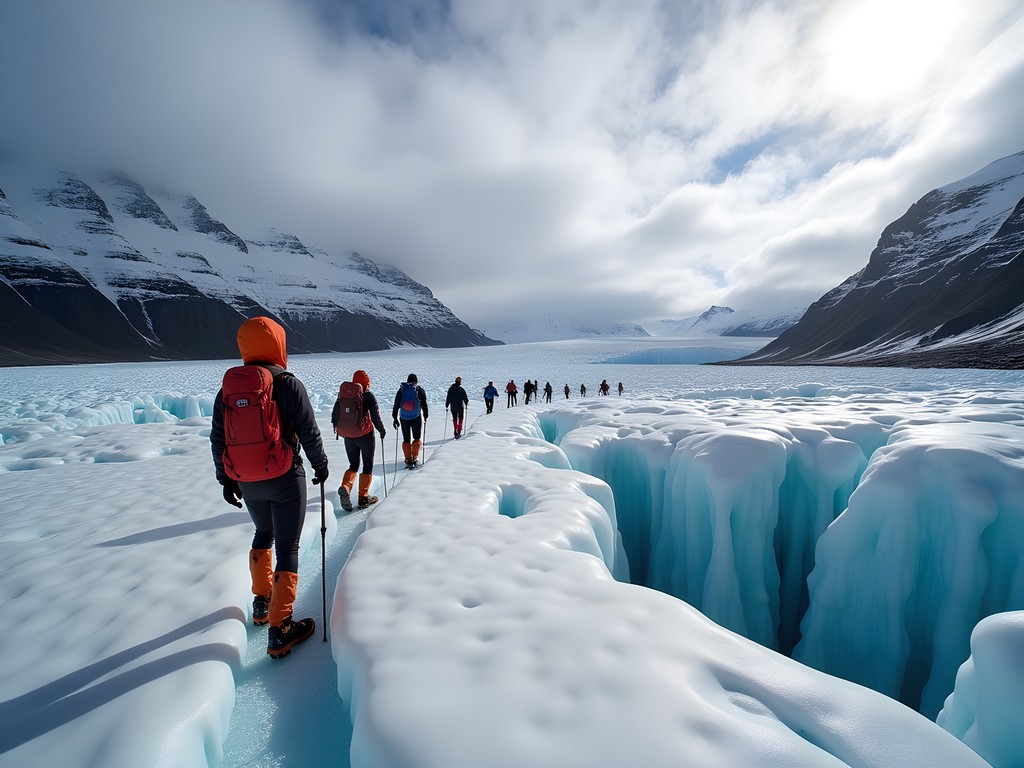
💡 Pro Tips
- Choose an advanced glacier hike for the best experience—basic tours only reach the very edge
- Bring polarized sunglasses to cut glare and see the true colors of the ice
- Pack high-energy snacks—the cold burns calories faster than you'd expect
Jökulsárlón: Where Glacier Meets Ocean
Just a short drive from Höfn lies what many consider Iceland's most photogenic location: Jökulsárlón glacier lagoon and the adjacent Diamond Beach. Here, massive icebergs calved from Breiðamerkurjökull glacier drift slowly through the lagoon before reaching the Atlantic, where wave action polishes them into crystalline sculptures that wash ashore on black sand.
I visited at both sunrise and sunset, when the low arctic winter sun bathes the ice in golden light. For the ultimate perspective, I booked a zodiac boat tour that navigated between towering icebergs—some larger than houses—providing intimate views impossible from shore. The boat captain shared that each iceberg contains ice up to 1,000 years old, and you can actually hear the ancient air bubbles popping as they melt.
Photography here presents unique challenges and rewards. My lens warming pouch prevented condensation when moving between the heated car and the frigid outdoors, a trick I learned from a National Geographic photographer I met in New Zealand. For time-lapse sequences of the moving ice, my remote timer allowed me to capture the subtle movements while keeping my hands warm inside the car.
Diamond Beach, just across the road from the lagoon, offers perhaps the most striking juxtaposition in all of Iceland—crystalline ice fragments scattered across black volcanic sand like diamonds on velvet. The scene changes hourly as new ice washes ashore and existing pieces melt or get carried back to sea.
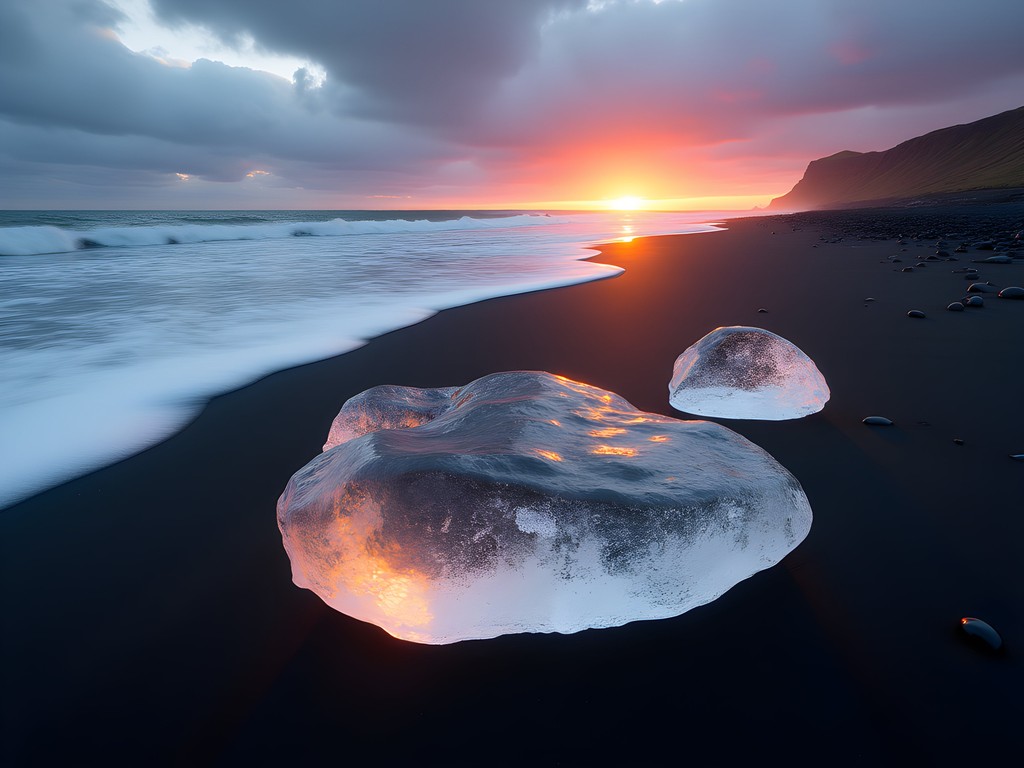
💡 Pro Tips
- Visit Jökulsárlón at both sunrise and sunset for dramatically different lighting
- Book zodiac tours in advance, but be prepared for cancellations due to weather
- Bring waterproof boots with good traction for Diamond Beach—the combination of waves and ice makes for slippery conditions
Beyond Ice: Hofn's Cultural and Culinary Treasures
While glaciers may be the headline attraction around Höfn, the region's cultural offerings provide perfect counterpoints to days spent in the ice and cold. The Þórbergssetur museum in nearby Hali offers fascinating insights into Icelandic literature and rural life through the works of author Þórbergur Þórðarson. The building itself—designed to resemble a stack of books—reflects the Japanese concept of shakkei or borrowed scenery, with windows perfectly framing the glacier views beyond.
After growing up in a family involved in ryokan management, I've developed a deep appreciation for hospitality that honors local traditions. Nowhere is this more evident than at Hali Country Hotel's restaurant, where the Arctic char is caught from the property's own waters and served with foraged herbs that somehow thrive in this harsh climate.
For a truly unique experience, I visited a local farm that produces hand-knit items from the wool of Icelandic sheep—a breed unchanged since Viking settlement. The farmer explained how the dual-layer wool (with water-resistant outer fibers and insulating inner fibers) evolved specifically for Iceland's climate. I couldn't resist purchasing a traditionally-patterned Icelandic wool sweater that has since become my favorite winter travel companion.
Don't miss the opportunity to sample Höfn's famous langoustine (often called Iceland's lobster). The sweet, delicate meat rivals any luxury seafood I've had worldwide, and pairs beautifully with the surprisingly excellent local craft beers from Jón Ríki microbrewery.

💡 Pro Tips
- Ask locals about the day's langoustine boats—the freshest catch goes to restaurants the same evening
- Visit the Höfn swimming pool to experience local culture—Icelanders treat their geothermal pools as social hubs
- Look for knitting workshops offered in winter—a perfect activity for storm days when glacier tours might be cancelled
Final Thoughts
As my helicopter lifted off from Höfn for the return journey to Reykjavík, I gazed down at Vatnajökull one last time—a sprawling white giant streaked with volcanic ash, slowly retreating in our warming world. The glaciers around Höfn offer more than just adventure; they provide perspective. In a world increasingly defined by immediate gratification, these ancient ice formations remind us of deeper rhythms and longer timeframes.
Visiting Iceland's southeastern coast is not merely about checking off bucket-list experiences—though the ice caves and glacier hikes certainly qualify. It's about developing a relationship with a landscape that challenges our human-centered view of time and permanence. The Japanese concept of mono no aware—the pathos of things—feels particularly relevant here, where the very attractions we travel to see are ephemeral, changing dramatically with each passing year.
If you're seeking a luxury adventure that balances physical challenge with cultural depth and extraordinary natural beauty, Höfn offers a perfect gateway to experiences that will remain with you long after your crampons are packed away. Just remember that in Iceland, nature always has the final word—be flexible, respect local expertise, and prepare to be humbled by a landscape that operates on a timescale all its own.
✨ Key Takeaways
- Book specialized glacier experiences well in advance, especially for winter visits when ice caves are accessible
- Balance adventure with cultural experiences—Höfn's culinary scene and local museums provide perfect counterpoints to glacier exploration
- Invest in proper cold-weather gear—comfort in harsh conditions makes the difference between a challenging ordeal and an exhilarating adventure
📋 Practical Information
Best Time to Visit
November through March for ice caves; year-round for glacier hiking
Budget Estimate
$4,000-6,000 per person for one week including accommodation, private tours, and dining
Recommended Duration
5-7 days
Difficulty Level
Moderate To Challenging Depending On Specific Activities
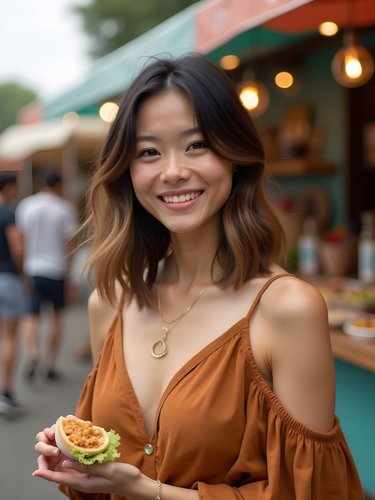
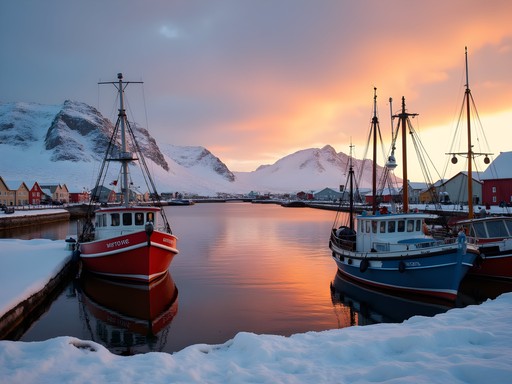


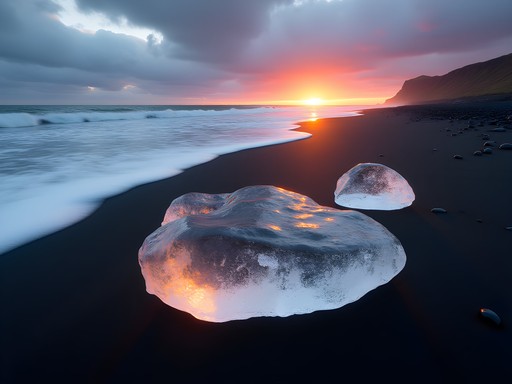



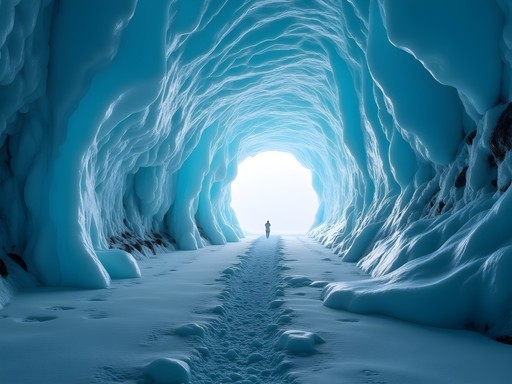
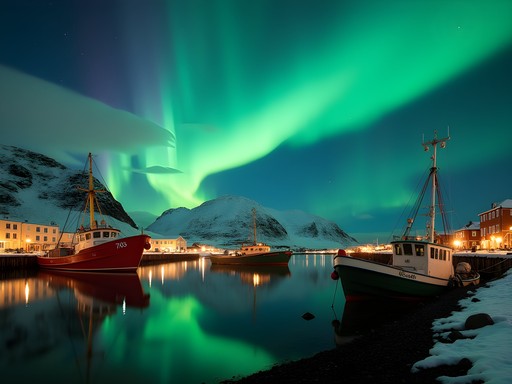






Comments
skyfan
OMG THIS IS AMAZING!! We're planning our honeymoon for next winter and just decided on Iceland after reading this! Those ice caves look straight out of a fantasy movie! Did you feel like 4 days in Höfn was enough? So excited I can barely sleep now!!
Kayla Murphy
Congrats on your upcoming wedding! 4 days was perfect for Höfn and the surrounding areas. Make sure to book your ice cave tour well in advance - they sell out quickly for the prime time slots. And definitely try the langoustine - Höfn is famous for it!
nomadninja
Your photos of the ice caves are stunning! What camera settings did you use to capture that amazing blue color?
coffeemaster
Just got back from Höfn last week and WOWWW! Those ice caves are even more incredible in person! Pro tip: book your glacier guide at least 3 months in advance if you're going in peak season. We almost couldn't get spots with the reputable companies. Also, the seafood restaurant Pakkhús was INCREDIBLE - get the langoustine soup!
luckynomad
Which tour company did you use? There are so many options online!
coffeemaster
We went with Local Guide of Vatnajökull - they were amazing! Small groups and super knowledgeable guides who take safety seriously.
Stephanie Romano
What a fantastic guide, Kayla! We took our family to Höfn last winter and your descriptions brought back so many memories. For anyone planning a trip, I cannot stress enough how important it is to be flexible with your itinerary. We had two glacier tours rescheduled due to weather conditions, but our third day was perfect. The wait was absolutely worth it! For photography enthusiasts, I'd recommend bringing a tripod for those incredible ice cave shots - the low light inside demands it. Also, the local restaurants in Höfn were some of the best meals we had in all of Iceland. Don't miss trying the langoustine - it's their specialty!
wandergal
This looks amazing! When is the best time to see those blue ice caves? I heard they're not accessible year-round. Also, did you feel the helicopter tour was worth the splurge?
coffeemaster
Not the author but I've been there! Ice caves are typically only safe from November through March. And YES to the helicopter - expensive but absolutely mind-blowing views you can't get any other way.
Savannah Torres
Kayla, your photos of Vatnajökull took me right back to our family trip there last winter! We also stayed in Höfn and it was such a perfect base. My kids (8 and 10) still talk about the ice caves like they were visiting another planet. One tip for families considering this trip - we found booking a private guide was worth every penny, especially with children. Our guide knew exactly where to go for the safest but still spectacular views, and paced everything perfectly for little legs. The seafood in Höfn was indeed incredible - my husband still dreams about that langoustine!
nomadninja
Did you need any special gear for the kids? Planning to take my 9-year-old next year.
Savannah Torres
Our tour company provided the basics (helmets, crampons), but we brought our own waterproof everything! Layers are key. And good gloves - their hands get cold fast when they're touching all that ice!
luckynomad
Those ice caves look unreal! Definitely adding this to my bucket list.
Bryce Diaz
This brought back memories! I visited Höfn during the shoulder season last year, and had a completely different experience. The ice caves weren't accessible yet, but the solitude on the glacier was incredible. Our guide told us about a local farmer who discovered a Viking sword that had been preserved in the ice for over 1,000 years - just melted out due to climate change. For those planning to visit Jökulsárlón, try to go at sunrise. I had the black beach almost to myself, watching the icebergs glow pink in the early light. The tour buses don't arrive until mid-morning. Kayla, your helicopter perspective is making me want to go back and see it from the air next time!
skyfan
That sunrise tip is gold! Adding it to my notes for our trip next winter. Did you rent a car or take tours from Höfn?
Bryce Diaz
Definitely rent a car if you can! The freedom to stop wherever you want along that coastline is priceless. Just make sure it has good winter tires if you're going in winter.
freewalker
Those blue ice photos are unreal! Bucket list destination for sure.
Hannah Woods
Brilliant write-up on Höfn! I spent three weeks in Iceland last winter documenting glacial retreat, and the Vatnajökull region was the highlight. For anyone planning a visit, I'd add that the ice caves are completely different each year - they form, collapse, and reform as the glacier shifts. That's what makes them so special. One thing I'd emphasize is the importance of proper gear. My crampons were essential on the glacier, and having waterproof everything is non-negotiable. The weather shifts dramatically and what starts as a clear day can turn into horizontal rain within minutes. Kayla, did you manage to visit any of the lesser-known caves? There was one our local guide called 'The Cathedral' that was less photographed but absolutely breathtaking.
Venture X
Premium card with 2X miles, $300 travel credit, Priority Pass